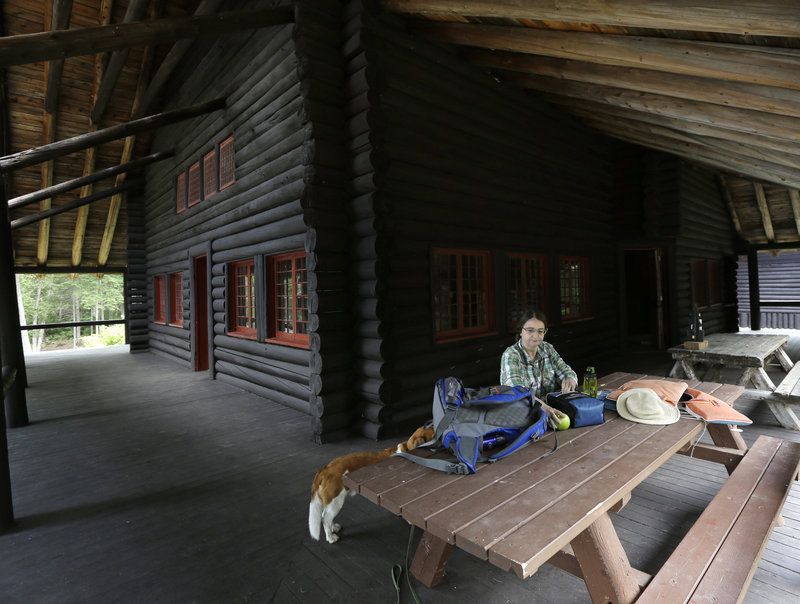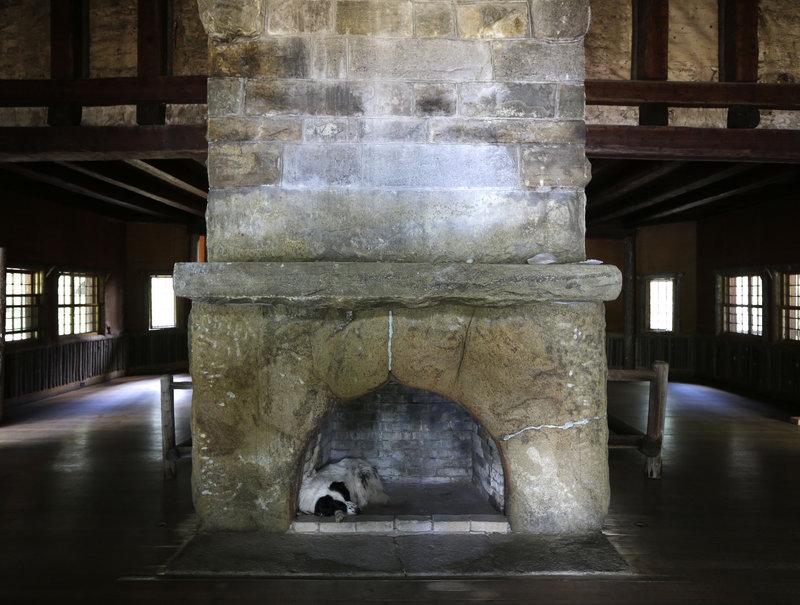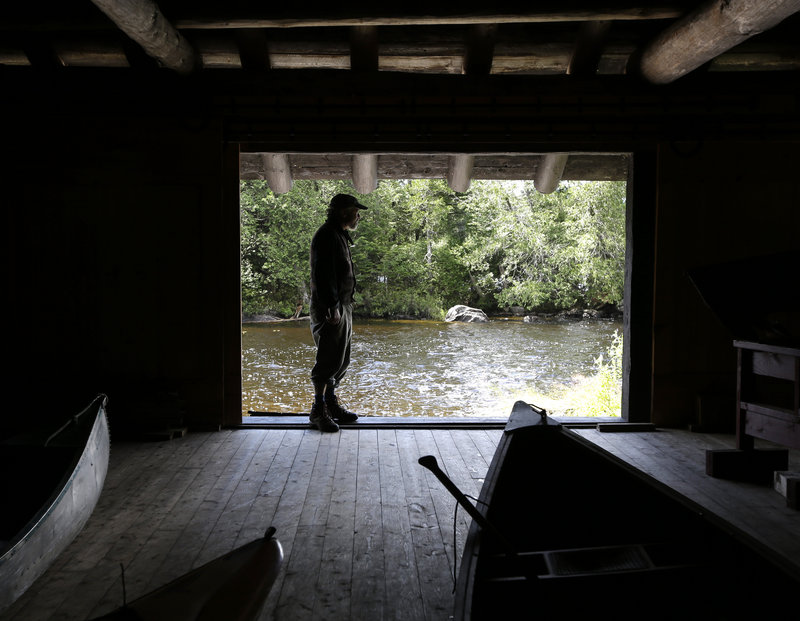NEWCOMB, N.Y. – Camp Santanoni will never again be a private refuge for the mega-rich to enjoy the Adirondacks in rustic opulence, but after two decades of slow, steady restoration work on the log buildings, visitors can get a sense of roughing it, Gilded Age-style.
Santanoni was one of the earliest great camps built by wealthy families with names like Rockefeller and Vanderbilt beginning in the late 19th century. Managed by state environmental officials, it is the only remaining great camp that is publicly owned. But the once-imperiled camp remains a work in progress. Summer visitors who hike or bike the nearly 5-mile road to the lakeside camp are likely to hear hammering.
“When I first went there, the first week I almost left. It was so daunting,” said master carpenter Michael Frenette, who has done most of the work at Santanoni since 1998. At first he performed triage, but now almost all the buildings are stabilized.
“Two or three years ago, I remember just walking up on the porch and it being like a lightning bolt striking me: ‘Wow, it’s back! It’s a camp again.”‘
The great camps were camps only in the loosest sense. Santanoni’s owners, Albany banker Robert Pruyn and his wife, Anna, had roughly 50 buildings constructed, including a gatehouse, barns and a creamery. The roof of the main lodge sweeps over five more buildings, creating a suite of cabins sharing a long porch overlooking Newcomb Lake.
“Some of the early visitors just got off the wagon and ran around the porches and opened the doors and just marveled there was running hot and cold water and that there was a piano in the living room,” said Steven Engelhart, executive director of Adirondack Architectural Heritage, which is helping preserve Santanoni.
The piano and other furnishings are long gone, but summer visitors can poke through the buildings. Several thousand come each year, including winter visitors on cross-country skis. The idea is to maintain the camp so that it appears as though the Pruyns could show up anytime, said Charles Vandrei, historic preservation officer for the state Department of Environmental Conservation.
“Everyone likes to go through all the rooms trying to imagine what it was like 100 or 150 years ago,” said Matt Carter of Kinderhook, who biked in recently with his preschool-age daughter, Abby.
In Santanoni’s heyday, the Pruyns and their guests would stroll among the tall pines with men in jackets, ladies in long skirts. They played ping-pong, sang, boated and enjoyed meals cooked by staff they could summon by buzzer. Pruyn heirs sold the camp to another family in 1953. It passed to the state in 1972.
Next came a long period of limbo when the buildings were left to slowly deteriorate. The Forever Wild clause of the state constitution imposes strict rules for state land in the Adirondack Park, and some environmentalists wanted the woods to reclaim the site. Conservation groups even monitored the camp to make sure no repairs were made.
The architectural heritage group was started in 1990 in part to save Santanoni, which was designated a state historic area in 2000, the same year it became a National Historic Landmark.
Preservation work began in 1993 on the artist cabin’s roof — a priority to keep buildings stable — and has spread to other buildings since then. Frenette this summer is repairing one last roof on a farm cottage away from the main complex. College-age summer staffers scrape and paint windows when not giving visitors information.
Frenette, who is 56 and lives nearby in Tupper Lake, visited Santanoni during its low ebb in the early ’90s but didn’t begin working there until after being selected for a master class on wood preservation technology hosted by the International Council on Monuments and Sites in Norway. Engelhart saw a notice that Frenette attended and asked him if he wanted to come by for a volunteer work day.
Despite his early misgivings, the job melded two things Frenette loves: working with wood and being in the forest. He seems to know the building down to every notch in every log. Since he works by himself or with a few helpers, progress comes slowly. But visitors who come every year are treated to a sort of time-lapse view of the buildings being repaired.
Engelhart figures $1.9 million has been spent on rehabilitation since the mid-’90s, with money coming from his group, the Town of Newcomb, state and federal government. He estimates they are about halfway through. But there’s still work that could be done, from chimney flashing above to the wine cellar below.
“Endless, really,” Frenette said. “It depends on where you want to go.”
Send questions/comments to the editors.





Success. Please wait for the page to reload. If the page does not reload within 5 seconds, please refresh the page.
Enter your email and password to access comments.
Hi, to comment on stories you must . This profile is in addition to your subscription and website login.
Already have a commenting profile? .
Invalid username/password.
Please check your email to confirm and complete your registration.
Only subscribers are eligible to post comments. Please subscribe or login first for digital access. Here’s why.
Use the form below to reset your password. When you've submitted your account email, we will send an email with a reset code.